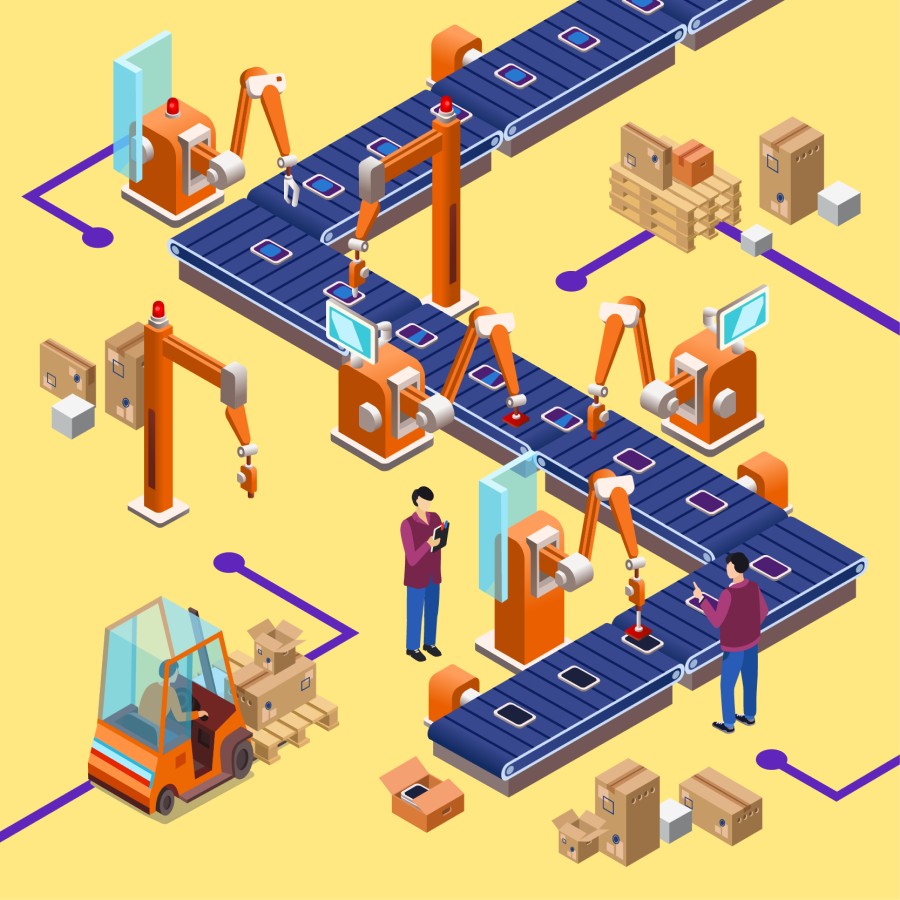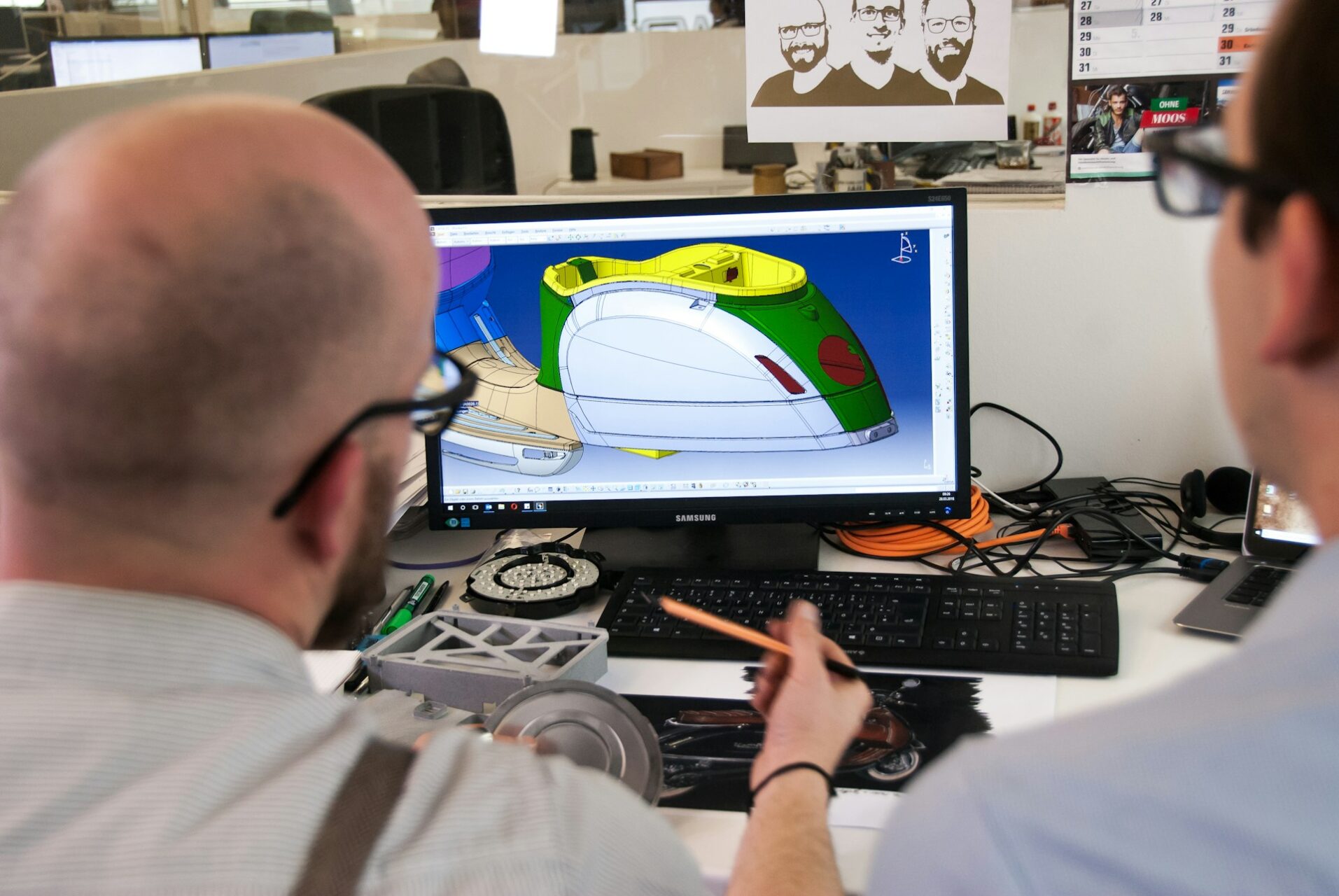
Here’s What You Need to Know About Manufacturing Processes
September 4, 2018 - Emily Newton
Revolutionized is reader-supported. When you buy through links on our site, we may earn an affiliate commision. Learn more here.
It’s a little reductive to think about a single “manufacturing industry.” Manufacturing processes can be so different between companies and from product to product that it’s easier just to separate them by process type. There’s some overlap, as you’ll see, between these six process “pillars” of the manufacturing world. But each of the six serves a critical function for small businesses and large industrial enterprises alike.
Repetitive Manufacturing
Generally speaking, repetitive manufacturing involves setting up dedicated assembly lines that produce just one item throughout each day and even at different times of year. It’s relatively simple to adjust production up or down according to changes in customer demand, as there’s little or no machine or staff changeover required. For the same reason, it’s ripe for certain types of automation.
Multiple industries make use of repetitive manufacturing, including electronics, packaging and automotive parts. Repetitive manufacturing also produces consumer-level household tools and appliances, including refrigerators and the like.
Discrete Manufacturing
Discrete manufacturing, unlike repetitive manufacturing, means a production facility might switch between several product types over the course of a day or a year. One manufacturer might require equipment changeovers frequently, while others might require far less frequent changeovers. A production facility that operates in discrete mode can sometimes pivot between very dissimilar products, but a changeover of this type requires more time.
The automotive sector engages in discrete manufacturing. So do smartphone makers and other companies that specialize in electronics. Many manufacturers also build furniture and toys this way because they usually offer several products in multiple variations, requiring a more diverse production environment. Depending on demand and the company in question, there’s a lot of potential overlap between repetitive and discrete manufacturing, in terms of the items a factory can produce.
Job Shop Manufacturing
Just like the name probably suggests, job shop manufacturing isn’t nearly as structured as repetitive or discrete manufacturing. Whereas those types have production lines, a job shop is more a general area. Several people at once might share the shop, or just a few individuals might use it over the course of a day or week.
Job shops typically churn out just a single-product SKU or minor variations on a single product. Even so, human imagination is the only limit. It might be simple electronics, bespoke clothing, customized furniture or something else entirely. Sometimes the focus is made-to-order products with handmade detailing, and sometimes it’s just a single product with no variations.
In times when demand requires a change in approach, a job shop could scale up some parts of the required labor into a discrete assembly line, or augment their manufacturing processes with light automation.
Continuous Process
Above, we discussed repetitive manufacturing. A continuous process is the same general idea, except the material is a liquid or a gas — or even a slurry or a powder. Some operations that deal with mined materials might work with granular, rocky or chunky materials. A co-op that sells homemade jams probably operates like a job shop. On the other hand, a corporation that sells jam on a massive scale uses machines that specialize in continuous manufacturing processes, generally 24 hours per day.
So-called “undifferentiated” products rely on continuous processing and might include the many types of salt for household and commercial purposes, plus fuels like natural gas and heating oil. Historically, the various food industries have been major proponents of continuous process manufacturing. Pasta manufacturing, along with the production of sauces, condiments and ice creams, all take advantage of continuous processes. These days, as companies seek to diversify, it’s not uncommon to find foodstuffs manufacturers operating discrete production lines.
Batch Process
The batch process is unlike repetitive and mass manufacturing in a key way: Instead of producing one product from start to finish, continuously, the batch process “handles” a group of identical products one step at a time. It’s like baking four loaves of bread in tandem instead of just one.
To carry the analogy further, a single “batch” might be 200 loaves of bread. After 200 loaves, the workers might shut down and clean the machine. If it’s operating according to discrete manufacturing, the factory might recalibrate its equipment for muffins instead. Or, with the cleaning and reset performed, it might produce another batch of 200 loaves, if demand calls for it.
In fact, producers of especially perishable foods, like bakers, usually take advantage of batch processing to maximize oven space and minimize risk if one batch gets ruined. So do companies that are unsure of future demand or that don’t have the capital required for a continuous manufacturing process — or that don’t want to make a major investment in an untested product.
Additive Manufacturing
Additive manufacturing is on the cusp of achieving a milestone when it comes to adoption among modern manufacturers. In fact, additive manufacturing, or 3D printing, has seen an amazing 875 percent growth in just the past five years. And it’s easy to see why: 3D printing produces less waste than many of the more traditional subtractive production methods, and is rapidly adding to the number of materials it’s capable of working with.
The health care and medical fields remain some of the most ideal candidates for 3D printing: The plastics and rubbers involved in medical devices can now be tailor-made for individual patients more cost-effectively than ever before. The maritime and aerospace industries are increasingly relying on additive manufacturing as well to produce cheaper, lighter, stronger replacement parts for critical machines.
In fact, once a plaything for affluent hobbyists, additive manufacturing now holds so much promise with such a variety of building materials — including gold, silver, titanium, steel, aluminum, plastics and rubbers — you’ll soon be hard-pressed to find an industry this disruptive tech won’t touch. If it doesn’t supplant some of the other five entries on this list, it’s certainly going to change what manufacturers do and reduce the human effort required to do it.
Featured Image: Designed by vectorpouch / Freepik
Revolutionized is reader-supported. When you buy through links on our site, we may earn an affiliate commision. Learn more here.
Author
Emily Newton
Emily Newton is a technology and industrial journalist and the Editor in Chief of Revolutionized. She manages the sites publishing schedule, SEO optimization and content strategy. Emily enjoys writing and researching articles about how technology is changing every industry. When she isn't working, Emily enjoys playing video games or curling up with a good book.




